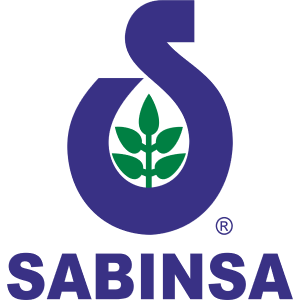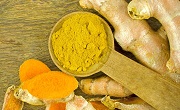A few years ago, most of us had never heard of “golden milk.” Now, this fortifying mixture of warm milk, turmeric, and aromatic spices is a staple of smart cafés and fresh cases, where it’s been “creating a buzz in the healthy drinks arena,” a Mintel blog post on the topic from June 13, 2017, states.
One key feature drawing consumers to golden milk is in large measure what established the drink in India’s Ayurvedic healing tradition centuries ago—namely, that the turmeric (Curcuma longa) responsible for its namesake hue is rife with curcumin, a polyphenol “witnessing a radical shift from being just a culinary spice, pigment, or Indian folk medicine to becoming an agent with therapeutic relevance in managing several health conditions,” says Shaheen Majeed, president worldwide, Sabinsa (East Windsor, NJ).
Those properties have kept curcumin trending for several years running. And if you were expecting it to run its course, think again. “Curcumin is not done yet,” Majeed says. “It still has traction!”
Nutraceutical Rock Star
As far as functional ingredients go, curcumin has attained “mass-market rock-star status,” Majeed says, noting that Google recognized it as one of the search engine’s most-searched terms in 2016— “signifying growing consumer interest in its benefits,” he adds.
And indeed, the value of the curcumin market surpassed $46.6 million globally in 2016, with expectations for it to top $110.5 million by 2024, according to a Global Market Insights analysis.
Here in the United States, 2017 SPINS data puts turmeric (of which curcumin is the key component) in the top 10 of joint ingredients across all outlets. Among conventional multi-outlet stores, for instance, 2017 sales of turmeric were $4,891,239, a 31.0% year-over-year increase (SPINSscan Conventional Multi-Outlet, powered by IRI Worldwide, 52 weeks ending November 5, 2017). Among U.S. natural supermarkets, turmeric had 30.6% growth in the joint health category from 2016 to 2017, bringing total sales to $3,339,944 (SPINSscan Natural, 52 weeks ending November 5, 2017).
But, can any single antioxidant have this much staying power?
Staying Power, or Hype?
Majeed certainly thinks so. For one, “increasing consumer preference for natural ingredients” has endeared curcumin with the public, he says. “In addition, increasing demand for health-and-wellness supplements against the backdrop of a growing geriatric population is also resulting in improved curcumin demand.”
But perhaps more significant is the persistent emergence of health associations uncovered in ongoing research. “Proven health benefits,” Majeed notes, “should continue to be the driving force of global curcumin growth.”
Sound Science
And it’s easy to find the evidence of those benefits. “A basic PubMed search with the keyword ‘curcumin’ gets you more than 11,000 scientific publications, including clinical studies,” Majeed says, which testifies to the compound’s “compelling health-and-wellness properties of interest to researchers and consumers alike.”
Strong science links curcumin—and its major chemical actives, curcuminoids—to brain and cognitive health, weight management, heart health, digestive health, inflammation support, joint health, bone density, metabolic health, and more, Majeed says. “This diversity will expand curcumin’s use to new consumers in the future,” he says.
Pharmaceutical firms and their research teams increasingly express interest in curcumin. “In 2016, pharmaceutical applications accounted for more than 50% of the total industry demand, fueled by extensive research demonstrating efficacy against various lifestyle-related conditions,” Majeed says.
It all adds up to “an excellent case study in the role that good research can play in making an herb successful in the marketplace,” he continues.
Another area of growth for curcumin may be in functional foods such as beverages—especially hot ones, like golden milk. “In Japan,” Majeed notes, “turmeric-derived beverages are popular, and we expect that to expand to more regions.” Already he’s noticed turmeric lattes available in “hip cafes in San Francisco and New York,” as well as flavored curcumin milkshakes. Other potential applications he’s watching include sports nutrition products, cosmetics and supplements that combine curcumin with “synergistic” ingredients, like omega-3s and piperine.
Heading off the Headwinds
But the potential for turbulence exists. The ingredient’s success and rapid growth “make it susceptible to exploitation—particularly adulteration,” Majeed says. So in 2017, Sabinsa became the founding board member of the Global Curcumin Association, the mission of which is not only to increase awareness about the compound and its science-backed benefits, but also to “create needed transparency about product quality,” according to the association’s website.
Majeed believes it is imperative to advocate for curcumin best practices. “We can protect and preserve the integrity and future of the category by taking steps to reduce economically motivated adulteration with synthetic replacements masquerading as naturally derived,” Majeed says. He also expects the group to prepare a code of ethics and quality standards for the category and make sure that scientific attributions are correct. “These are the core objectives for the association, so look for these developments in 2018.”










